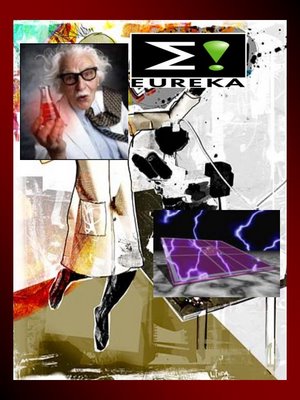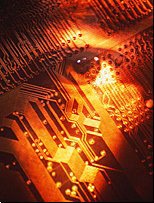ElectriPlast: Prolific Inventors

Captured,
The Eureka
Moment!
By Vince S.
ElectriPlast Blog Editor
Creativity: Rearranging what we know in order to find out what we do not know.
Innovation, the need to create or invent, is a human trait that appeared in the earliest hominids. They invented stone tools to provide food and protection, which, in turn, ensured their survival. What wasn't invented was discovered serendipitously as discovery worked hand in hand with invention. Fire, stone and metalworking, the domestication of animals, farming, etc., all guaranteed our place at the top of the food chain, while enabling early man to create more tools.
Greek philosopher Plato coined the phrase, “Necessity is the mother of invention,” but it was prehistoric man who paved the way for Plato’s theory by putting inventions to the test. In all likelihood, no other task so closely benchmarked the evolution of humans than his innovative spirit and his ability to invent what he needed to find his way through seven million years of human history.
From the very beginning, man has been forced to innovate or perish. From the first system of spoken communication to the cutting edge technology required to put a man on Mars, each notch on the timeline of history has been notable for inventions. And while the greatest minds of all time might disagree as to what comprises the top 1,000, 100 or ten inventions that have been of the greatest benefit to man, they would most likely agree that man's inventive spirit has always been driven by need and imagination.
A list of the greatest inventions depends on whom you ask; however, after considerable research, here are a few that represent man’s inexorable march through time: Language, math, the mechanical clock, the printing press, the steam engine, the battery, the light bulb, the telegraph, recorded sound, the telephone, the radio, the internal combustion engine, the airplane, the computer and the Internet.
"Everything that can be invented has been invented."
So thought Charles H. Duell, the myopic Commissioner of the U.S. Office of Patents in 1899. Left up to Duell and other vision-challenged members of the “flat earth society,” innovation would have been unnecessary beyond New Year's Eve 1899. Fortunately for mankind, vision, innovation and creativity were still at work when the new year dawned. Inventors, working on “disruptive technologies” (sound familiar) in the pre-computer era, were known for the quality, magnitude and prolificacy of their inventions.
[Blognote: A disruptive technology is one that dramatically renders the prior art--a U.S. Patent Office term--superfluous. For example, when the automobile was invented, the horse and buggy era was doomed to become a footnote in the history of transportation.]
In terms of quality and magnitude, the following abridged list of master inventors spanned centuries and impacted billions of people: Gutenberg (printing press), Franklin (bifocals, etc.), Edison (light bulb, etc.), Watt (steam engine), Bell (telephone, etc.), Volta (battery), Tesla (radio, etc.) and others. Clearly, their credentials as inventors of disruptive technologies cannot be challenged.
Prolific inventors are rare.
According to the Institute of Invention and Innovation, “Inventors are rare and prolific inventors are rare indeed.” Less than 1% of the US adult population has been granted a patent. Of that number, only 10% are considered prolific inventors; i.e., those who have obtained at least five patents over the course of their career.
Prolificacy, the third and final characteristic of the master inventor, is interesting because inventors in the Information Age have the advantage of technology to aid their search for solutions to problems. A random selection of some of the many prolific inventors, the number of patents they were granted and a few of their inventions are:
- Shunpei Yamazaki (1,432 patents, semiconductors, etc.);
- Thomas Edison (1,093, light bulb, phonograph, etc.);
- Francis H. Richards (894, golf ball machine, etc.);
- Melvin De Groote (925, oil industry, etc.);
- Elihu Thomson (696, electric welding, alternating current technology, etc.);
- Jerome Lemelson (597, bar-code reader, etc.);
- Edwin Land (535, Polaroid, etc.);
- George Westinghouse (361, electric range, etc.);
- Dean Kamen (150, Segway, etc.);
- Nikola Tesla (111, radio, etc.), and numerous other inventors.
Innovation took on a whole new meaning in the Computer Age, when many thousands of new products and techniques were created. In the age of “bits and bytes,” it is possible for a single concept to have a profound effect, a “sea change,” on innovation.
Later, on the timeline of human achievement, another seminal event occurred in the conductive materials arena when Integral Technologies announced the invention of ElectriPlast. Like all disruptive technologies, its birth was barely noticed.
A very happy new year!
Integral Technologies recently announced it had been granted its 19th ElectriPlast patent, a far cry from the 50,837 patents General Electric has received to date! Also, Integral stated that it had filed 37 patents by October 2004. Since, the approval and issuance of ElectriPlast patents has taken up to two years from the date of filing, 18 more ElectriPlast patents should be approved by the end of October 2006.
Furthermore, with an additional 74 patents filed since February 2005, Integral will start 2007 with even more patents. Bear in mind that each patent represents more than one licensing opportunity because manufacturers and their rivals will compete to revise their product lines with a material that conducts electricity better than copper, but is 80% lighter, and is as strong as aluminum, but is 40% lighter. (Attention Boeing: Copper and aluminum, important components in aircraft, can make the Dreamliner lighter and even more fuel efficient.)
What will all this do for Integral’s bottom line? Yes! I thought you’d say that!
Getting back to innovation and prolific inventors, the Integral Technologies laboratory in Bellingham is an incubator for ElectriPlast inventor, Thomas Aisenbrey. With 111 patents granted and in process, his fertile mind generates ideas faster than a Petri dish creates cultures. His patents cover ElectriPlast use in cell phones, PDAs, antennas, GPS devices, computers, automobiles, aerospace applications, communications, electronics, military applications, medical devices, musical instruments, toys, and many other areas.
At one point, this prolific inventor once said there may be as many as 1,500 uses for each ElectriPlast patent. Moreover, Aisenbrey said that 300 patents is a logical number for him to target. (He is about one-third of the way there, folks!) If you consider patents created by users of ElectriPlast, another 100 or better might be created. Now, extrapolate the numbers by Aisenbrey’s 1,500-use theory, and you will get some absolutely stunning figures!
In terms of Prolific Inventors, that would accelerate our “ace,” Tom Aisenbrey, up the depth charts, putting him in some very illustrious company. At that point, the Institute of Invention and Innovation might have to rethink their theory about what constitutes a prolific inventor.
Imagine. Thomas Edison and Thomas Aisenbrey listed on the same page.








3 Comments:
PK, this is another fantastic contribution by your "editor." As the article pointed out, true "genius" is seldom recognized until after the fact. I believe history will bestow Mr. Aisenbrey with just such an honor.
Thanks for your efforts in keeping the blog going and for providing the thought-provoking articles.
This comment has been removed by a blog administrator.
Thank you very much.
Those writing for this blog believe that this to be a real opportunity in the making.
More importantly, that Integral is closer than ever before to realizing their business model, and converting what a very limited few have had the fortune to see into a known reality for the rest of the world to experience.
That said, your words have special meaning and impact to those taking part in this EB endevor, and are extremely appreciated.
It is this publisher's hope to continue in giving those interested, a toxic free atmosphere wherein they can learn, interact, experience and understand the unfettered views of the future before us all.
At the very least, our intention is to give you a far better read than that offered by the self appointed Wormwood** phenomon present and plaguing the varied ITKG discussion boards at present...
[(**) Note: This is a direct reference taken from C.S. Lewis' "Screwtape Letters."]
If any reading have questions, or thoughts you wish to share, or explore, please feel free to write.
electriplast@hotmail.com
Cheers and best from the Heart of Bavaria,
PK sends...
Post a Comment
<< Home